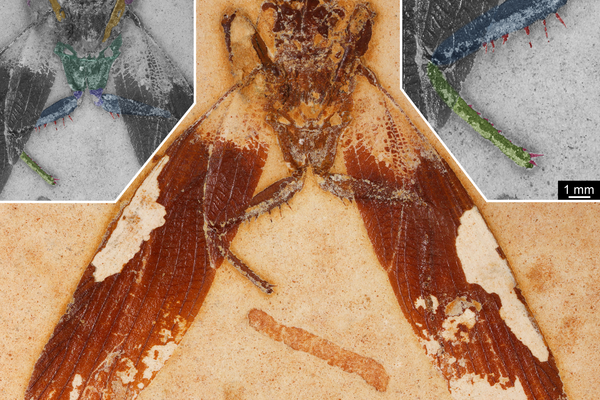Found: An Ancient Tick Preserved in Amber With Fossilized Mammal Blood
There’s a reason why this sounds so much like the beginning of Jurassic Park.

A specimen of amber, found in the mines of the Cordillera Septentrional, a mountain range that runs through the Dominican Republic, contains a very unusual specimen. Inside the amber is a tick, along with blood cells from the tick’s last meal—the first fossilized red blood cells from a mammal ever discovered.
This discovery, reported in a new paper in the Journal of Medical Entomology, comes from George Poinar, Jr., an entomologist and professor emeritus at Oregon State University. If an insect preserved in amber along with ancient blood cells sounds like a scenario out of Jurassic Park, that’s in part because Poinar’s research helped inspire the premise of Michael Crichton’s famous book.
How were these blood cells preserved with such clarity? The tick has two puncture marks on its back, which could have come from another creature picking the tick off its victim. That’s consistent with the grooming behavior of monkeys known to be living 20 to 30 million years ago in the area where the fossil was found. Imagine this sequence: the tick bit a monkey; another monkey picked the tick off while it was still full of blood; the tick landed in a bit of tree sap; the tree sap fossilized into amber.
Because the blood cells were so well preserved, Poinar was able to observe another feature: inside the blood cells, there are ancient parasites. Being able to study this ancient parasite, which is still around today, can help scientists understand the evolution and longevity of these diseases.
Don’t expect (or worry) about an effort to reanimate ancient monkeys from the blood cells’ DNA, though. Poinar told Gizmodo that while he’d love to extract DNA from the cells, the procedure would ruin the specimen.














Follow us on Twitter to get the latest on the world's hidden wonders.
Like us on Facebook to get the latest on the world's hidden wonders.
Follow us on Twitter Like us on Facebook